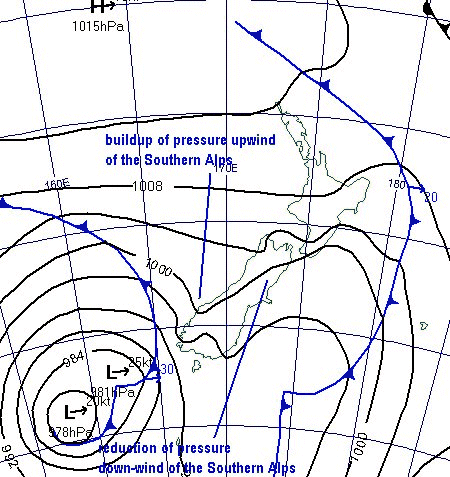|
Isobars only tell about the general wind flow, not the details.
Wind flow over land is not simple ... it is like water flowing over rocks, eddying around corners and rushing between boulders. Actual wind goes faster down valleys, bends around headlands, bumps about high places, is twisted by the coastline, dips and dives over hills and dales, eddies behind mountains, and gallops through gaps. Wind often doesn't move over land in the cool of the night, and it may be drawn onshore during a hot day (sea breeze), or offshore at night (land breeze). All these things can make the wind you actually experience standing on the ground come from a different direction to what is shown on a weather map.
Chains of mountains distort isobars crossing them. In the example to the right, the Southern Alps buckle the isobars coming in from the Tasman Sea, with a build-up of pressure on the windward side and then a drop of pressure down-wind from the mountains. |
 |